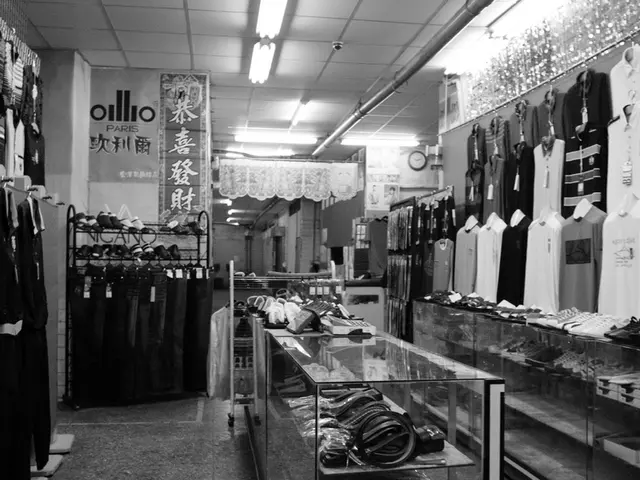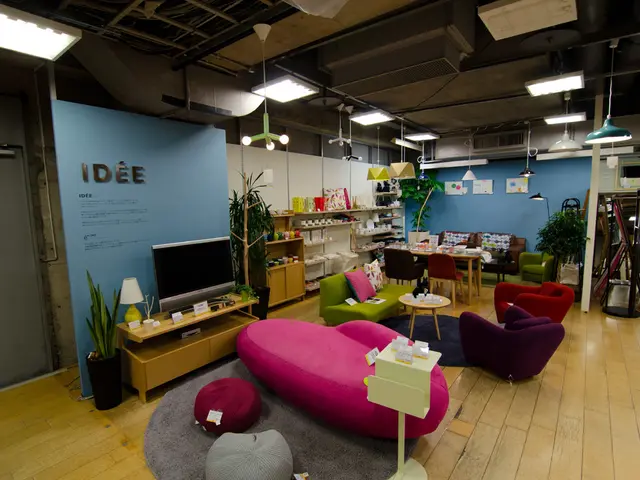Escalating supply shortage boosts house prices by 7% over the past three months
In Ireland, a significant housing supply shortage is driving a rapid increase in property prices, with no immediate relief in sight. Recent data shows that housing completions have declined for the first time since 2013, and planning permissions have also fallen, creating bottlenecks on future supply [1][2].
According to the latest figures, housing completions dropped to about 30,356 units in the 12 months ending March 2025, down from 31,681 units the previous year [1]. This decline is further reflected in housing commencements, which were at just 40% of the levels seen in 2023, comparable to the levels in 2016 [2].
The constrained supply amidst strong demand has resulted in a surge in home prices. National home prices increased by 12.3% year-on-year in Q2 2025, marking the fastest annual growth since mortgage lending rules were introduced in 2015. The average listed price nationally rose to around €357,851, which is 40% higher than pre-pandemic levels [3].
Demand for housing remains very high, with nearly 1 in 5 consumers in Ireland actively seeking to rent or buy homes—the second highest rate in Europe. However, only about 10.5% of owner-occupiers are likely to sell, keeping market turnover low [1][2].
Looking ahead, while there is some expectation of modest improvement in completions, particularly in Dublin where homes under construction increased by 19% at the end of 2024, the total output will still fall short of the estimated 50,000 to 60,000 units per year needed to significantly alleviate the shortage [4]. Structural challenges such as high build costs and difficulties making apartment projects financially viable also temper optimism about scaling up supply quickly [4].
Attention should focus on building costs and the viability of apartment development in Ireland over the long term, according to Conall Mac Coille, Bank of Ireland's chief economist. He predicted that house building this year will fall short of the required annual output to counter the supply crisis [4].
In the first half of 2025, the average price of properties sold was €445,000, with prices increasing by 7% in the three months to the end of June. MyHome.ie reported a strong demand and persistently inadequate supply for the housing market [1][2].
In Dublin, sellers sought an average of €495,000, a 5.1% increase compared to the same quarter in 2024. In the rest of the Republic, owners upped their demands by almost 8% to €340,000 on average. Regional prices include counties Kildare and Meath, where asking prices rose 8.3%, and Co Wicklow where vendors sought 9.6% more than during the same period last year [1].
The housing market was described as "very tight" in the report. Rival website Daft.ie reported that house prices rose 12.3% in a market "starved of supply" [2]. MyHome tracks asking prices, which is the price at which homes are first offered for sale on the market [3].
The recent Consumer Price Index showed that rents increased 5.2% in the 12 months to May [1]. At end-June 2025, there were 12,563 properties listed for sale on MyHome, a 1% increase compared to the same period in 2024 [1].
Despite the challenges, experts remain cautiously optimistic, urging for improved coordination in planning and infrastructure, and more effective cost control to address the housing supply shortage and bring Ireland's property market back into balance.
- The decline in housing completions, which dropped to about 30,356 units in the 12 months ending March 2025, has contributed to the investment opportunities in the Irish real-estate market, as the constrained supply amidst strong demand has resulted in a surge in home prices.
- As the housing market in Ireland continues to struggle with a significant shortage of properties, with no immediate relief in sight, lifestyle choices such as buying a home have become more challenging and expensive, with the average listed price nationally reaching around €357,851.
- In an effort to address the ongoing housing crisis, attention should focus on finance-related issues, including building costs and the viability of apartment development, as these structural challenges may hinder the ability to scale up supply quickly and significantly alleviate the shortage.




